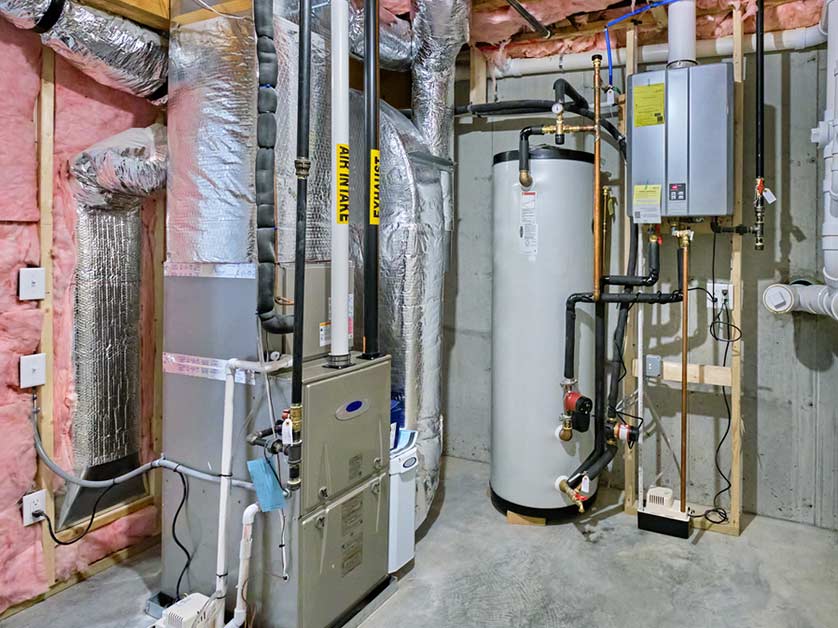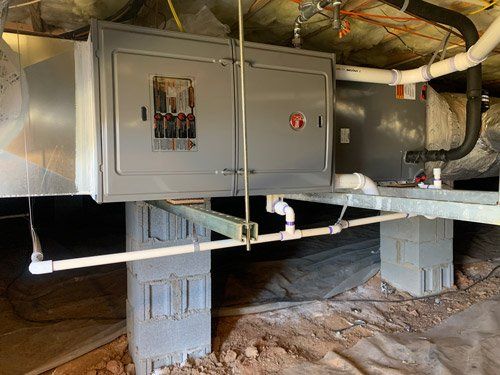Choose the right HVAC company for your home's climate control needs
Choose the right HVAC company for your home's climate control needs
Blog Article
The Ultimate Guide to Heating System Setup for a Cozy Home
Furnace installation is an essential element of maintaining a comfy home setting, particularly throughout the cooler months. As you consider these variables, the inquiry remains: what actions can you take to ensure your heating system serves you well for years to come?
Types of Furnaces

Gas heating systems are the most common option because of their effectiveness and reduced functional expenses. They use natural gas or lp, offering quick home heating and consistent efficiency, making them excellent for cooler climates.
Electric heaters, while normally simpler to set up and preserve, tend to have higher functional expenses. They are usually favored in areas where gas solution is unavailable or for homes with existing electric framework.
Oil heaters, though less usual today, stay a sensible alternative in particular regions. They burn heating oil, which can be helpful throughout chillier months, however their dependence on oil shipment presents potential obstacles.
Furthermore, there are high-efficiency versions offered across these kinds, which can significantly lower power consumption and utility expenses - furnace installation. Ultimately, understanding these furnace kinds will certainly assist homeowners select a system that lines up with their home heating needs, budget plan, and power choices
Picking the Right Size
Selecting the ideal size for a heater is crucial to making certain optimum performance and energy efficiency. An undersized furnace will struggle to maintain comfy temperature levels during the cold months, causing raised damage, greater energy bills, and prospective system failure. Alternatively, an extra-large furnace may cycle on and off as well often, causing ineffective heating and irregular temperature distribution within the home.
To figure out the proper heating system size, a computation called the Guidebook J tons computation should be done. This process examines numerous aspects, including the square video footage of the home, insulation levels, window sizes, and neighborhood environment conditions. This detailed analysis makes sure that the heater satisfies the certain heating needs of the room.

Installment Refine Review
In terms of materials, you will need ductwork, insulation, and sealing tape to guarantee ideal air flow and power efficiency - furnace installation. It is additionally crucial to have a brand-new heater filter accessible, along with airing vent materials, such as PVC pipe or steel flue, depending on the kind of furnace being set up
Safety and security equipment, including handwear covers, safety glasses, and a face mask, is likewise vital to safeguard versus dirt and debris during setup. Having all these devices and materials readily available not just simplifies the procedure but also enhances the security and effectiveness of the heater setup.
Maintenance Tips for Longevity
To ensure the durability of your heater, it is vital to carry out a routine upkeep timetable that addresses vital elements of the system. Beginning by changing or cleaning the air filter every one to three months, as a clogged filter can restrict air movement and lower performance. Furthermore, evaluate and cleanse the blower assembly to stop dust build-up that can prevent efficiency.
Next, inspect the thermostat setups and rectify if needed to make certain accurate temperature law. Check the ductwork for leakages or blockages, as this can lead to power loss and uneven home heating. Consistently lube the electric motor and bearings according to the producer's suggestions to lessen wear and tear.
Expert assessments must happen every year, where a certified specialist can analyze the furnace's overall condition, check for gas leaks, and make certain that safety and security features are working correctly. Think about mounting a programmable thermostat to enhance energy use and maintain constant home temperatures. By embracing these maintenance practices, you why not check here can improve your more information heating system's performance, extend its life expectancy, and eventually delight in a cozy and comfy home setting.
Verdict

Report this page